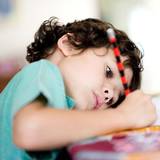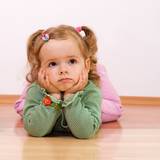Shop
01359
https://www.under5s.co.nz/shop/Hot+Topics+Articles/Child+Development/The+importance+of+drawing.html
The importance of drawing
|
It may look like just a whole lot of scribbles to you, but drawing is an important part of your children's development. Find out about the importance of drawing for young children and the many benefits it offers.
|
You might also be interested in ...
Encouraging your preschooler to read & write
Why is it that some children enjoy writing and drawing and for others it’s a struggle to get them to even pick up a pencil? Children are unique and each has individual ways in which they learn. There are many different learning styles and many children lean towards one, while also being a combination of others.
Why it’s ok for kids to be bored
Try stepping back when your kids complain about feeling bored. This will empower them to think for themselves and learn to be resilient. It will also encourage them to find their own way out of the boredom, and the problem-solving process helps them feel good about themselves.
join usJoin us on social media for all our latest news. |
sign upSign up and receive our latest newsletters. |
|







It may look like just a whole lot of scribbles to you, but drawing is an important part of your children's development.
Find out about the importance of drawing for young children and the many benefits it offers.
The importance of drawing
Why is drawing important for children’s development?
Children draw to express what they are feeling and thinking.
Drawing is an especially important outlet for children who do not yet have the verbal skills to communicate their feelings.
When a child draws something familiar to them, for example, a cat, they have the opportunity to think about what they know and how they feel towards this animal.
They use their memory to recall what they know about cats, in turn extending their concentration skills.
Drawing also helps to develop manipulative skills that will assist children to write.
Stages of art development
Each child’s art is unique and follows a universal pattern of development.
All children go through the same stages, but the age at which this happens varies.
The first stage is 'experimenting' where young children learn how to make marks or scribbles on paper. The objective here is to see what they can do through practice and repetition.
When children gain greater control of their pens you are likely to see circular patterns and the work taking up less of the page. As children are able to consistently create circles and lines, you may see circles with lines radiating from them.
The next stage is where these circles and lines start to become objects like people, as children are able to represent what they are thinking about. With continued practice, finer details start to appear such as people having fingers and eyebrows.
Colouring Books
Some research has indicated that colouring books may restrict some children’s creativeness and their independence of expression.
Some children may use the drawings in these books as a model of what an object should look like.
For example, if a horse looks a certain way in the colouring book, children may believe that their horse should look the same.
They may also feel a sense of not being able to achieve what is expected as they cannot colour within the lines provided.
This could restrict their ability to draw with feeling and emotion and to represent objects as they see them, rather than how the lines portray them.
Art is about discovery, using their imagination, experimenting and trying out new methods and expressions.
You know your child best, their temperament and capability, so you will know if colouring books are a useful tool or not.
Avoid drawing for your children
Like the idea of using colouring books, drawing for your child may limit their creative ability as your works dictate what objects such as a house, sun, and tree should look like.
A child that is confident with their own work will rarely ask you to draw for them.
Talking to children about their art
Around the age of 3 ½ children may start to have a plan for what they are drawing. However, as adults we often don’t know what our children’s intentions are.
It is a good idea to talk about what your child is drawing and ask questions about their artwork.
A general statement like “Can you tell me about your picture” is a good conversation starter, allowing your child to tell their story.
Displaying your child’s art works on the fridge or making a frame for special work shows them that what they have done is important.
What drawing experiences can you provide?
Children need a variety of items to draw with and draw on. These could be pens, chalk, crayons, paint and brushes.
Items like paper, cardboard, boxes, concrete, or even the fence, are good places to draw on.
Start drawing experiences as soon as your child shows interest, usually from around 8 months.
Try using paper that has no lines so your children are not confined when they first experiment with making marks on paper.
More kids articles to enjoy:
Source: This article has been written by Creators, a nationwide service offering quality home-based care and education. Creators are passionate about seeing every child’s unique talent being recognized and nurtured.
Image source: Toledolibrary